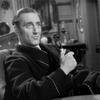Montmartre
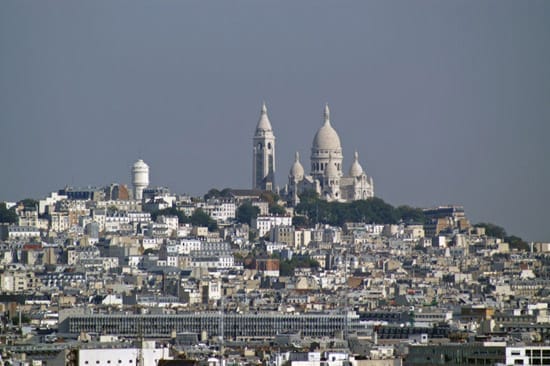
Montmartre, literally "mountain of the martyr," where Saint Denis, Bishop of Paris, was beheaded around 250 AD. Not to be outdone, Denis picked up his head and walked to the top of the hill, preaching a sermon as he went. In his honor the Basilica of Sacré-Cœur was built there, completed in 1914.
At the foot of the mountain, of course it was a different story. Montmartre gained its colorful reputation in the 19th century as artists, musicians, bohemians, the Moulin Rouge, Moulin de la Galette, Le Chat Noir, and the Folies Bergère moved in (more here), along with the public. Some if was still undeveloped when van Gogh painted this in 1886.

Below is another van Gogh painting of Montmartre, a favorite of mine, from 1887.
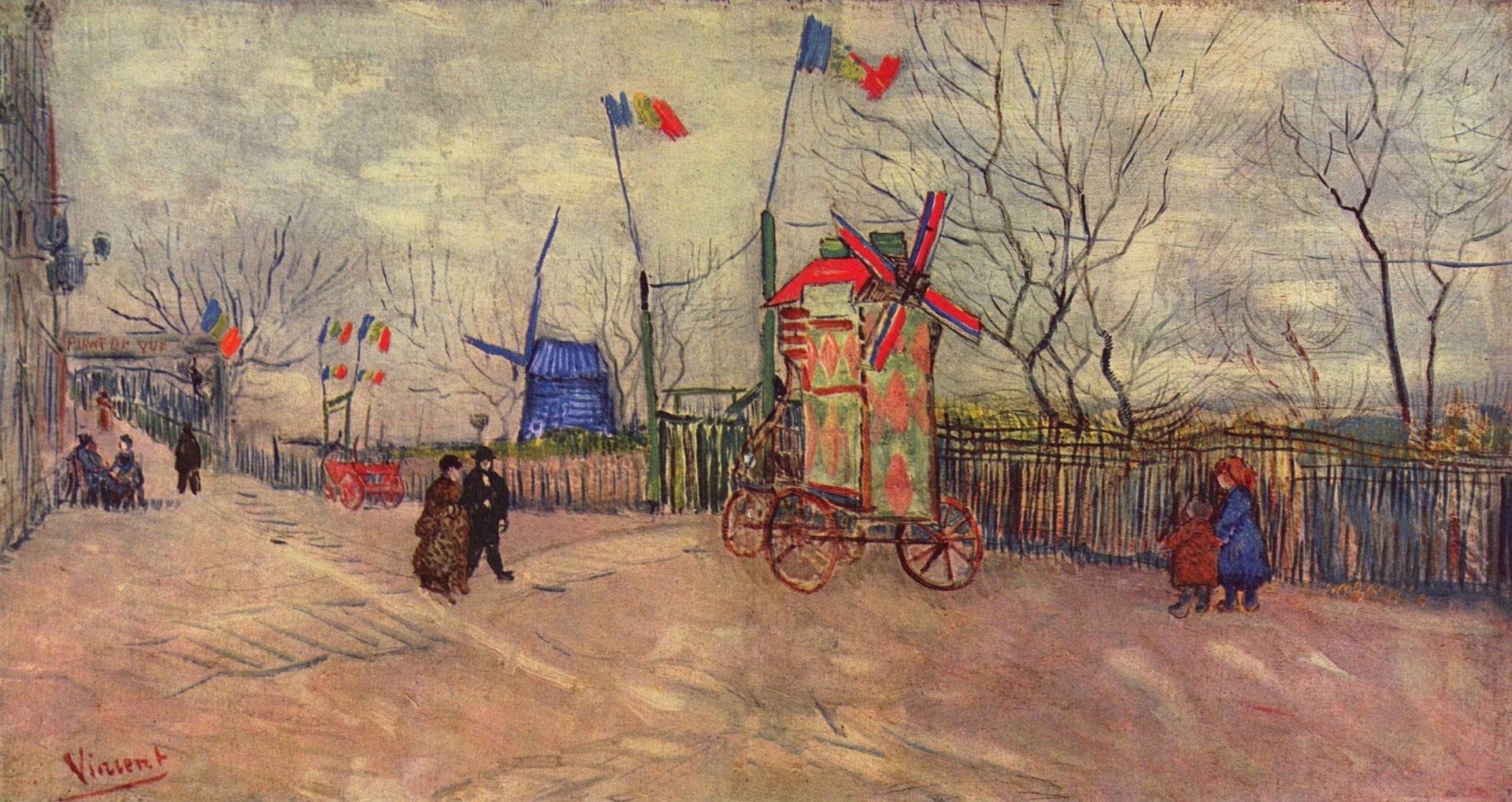
There are hundreds of wonderful paintings of Montmartre, especially the Moulin Rouge. Here are two from 1892. The first is by Catalan artist Ramon Casas. The second is by Toulouse-Lautrec: Deux femmes dansant au Moulin-Rouge.
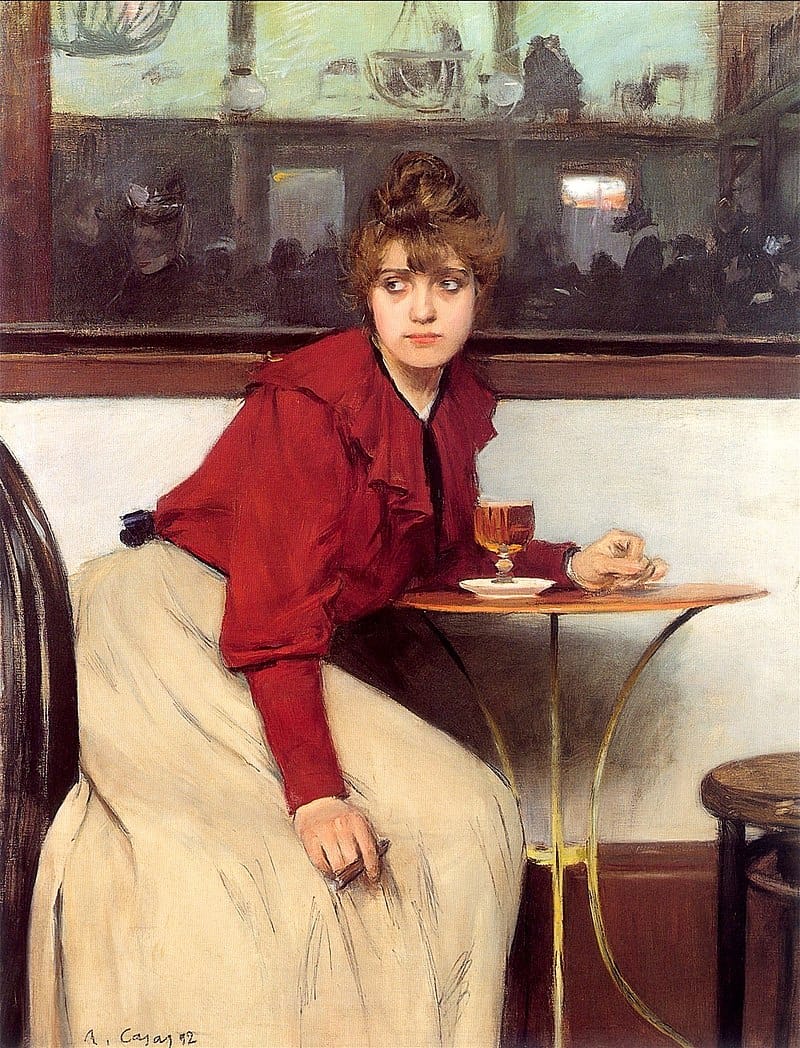
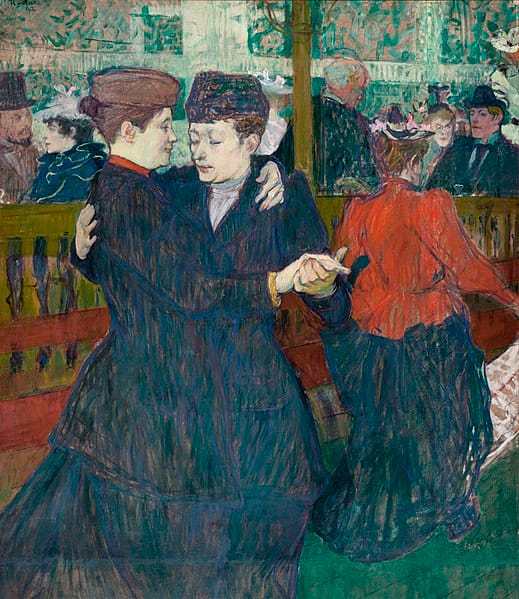
Below is a more amusing image, Café des Incohérents, Montmartre by another underrated Catalan painter and poet, Santiago Rusiñol, from around 1890 - amusing because he is gently mocking the drabness - more truthful that the color and energy of others' paintings.
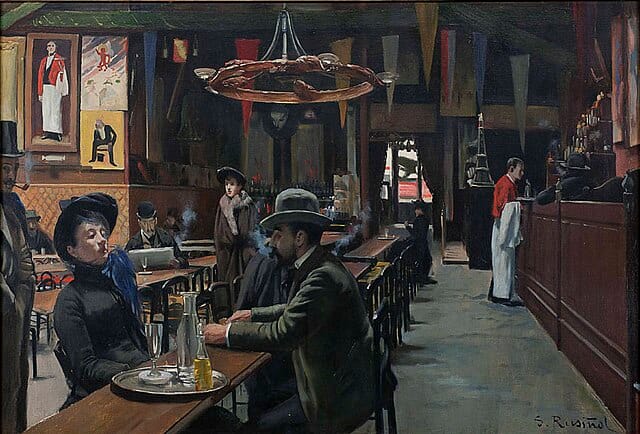
Montmartre remained bohemian through the 1930's as American expatriates like Henry Miller walked there at night for inspiration.
